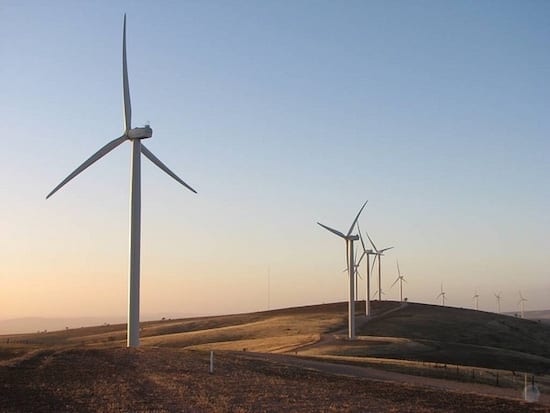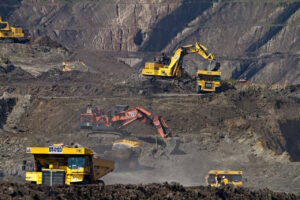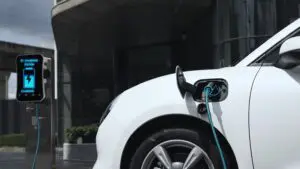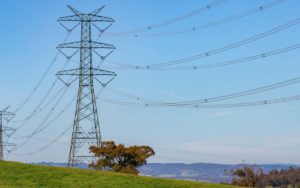At least federal energy minister Angus Taylor is happy. The decision by the Australian Energy Regulator and its outgoing chair Paula Conboy to sue four wind farms over their role in the events that led to the South Australia blackout in 2016 confirms, in his mind, the case against wind technology.
It does the same for most of his Coalition peers and many in mainstream media. Taylor’s delight in the regulator’s court action was quickly echoed by the number one media anti-wind campaigner, The Australian’s Graham Lloyd; “Lawsuit tells wind farms: cut the hot air”.
And there was the effort of Chris “I was right and I was the victim” Uhlmann, now at Nine Network and in Nine papers, still warning of the lights going out if we don’t slow down on renewables. “Three years on from the South Australian blackout, the dangers of our rush to renewables are even clearer.”
But despite the best efforts of Taylor, Uhlmann and the Murdoch media, it is not wind energy that is on trial here, this is about a highly technical interpretation of the National Electricity Rules, and the electricity industry is wondering what the hell the regulator is up to.
They are uniformly shocked and surprised – and this is across the wind industry, networks, advisors and even within the market operator – by the court action because it’s out of the blue and they don’t think there’s much chance that it will succeed.
And that view is held because the AER’s assessment of those rules appears to directly contradict that of the Australian Energy Market Operator, which is supposed to know this stuff.
The AER says it is suing the four wind farm owners – Tilt, Neoen, AGL and Pacific Hydro – because their wind farms did not keep on riding through the repeated faults and voltage swings caused by the monstrous storm and lightning strikes that tore down most of the main transmission links in South Australia.
Because of their settings, two of the wind farms – Hornsdale and Snowtown – switched off at the sixth disturbance, and two of them – Hallett and Clements Gap – at the fourth disturbance. The AER says this is a breach of the NER. It says they should have stayed on.
But what were the rules at the time? AEMO itself says they were not clear.
AEMO wrote in 2017 – in arguing that the rules needed to be changed, which they later were – that the NER ride-through requirements “fail to throughly specify performance requirements for plant under multiple fault conditions”.
It said the NER had to be changed so that the rules “specifically and unambiguously” describe the expected performance of each generating system. The current rules, it made clear, did not.
That looks pretty black and white. Even the market rule-maker, the Australian Energy Market Commission, agreed; hence its subsequent rule change. And this is where the court battle will be fought. All four wind operators reject the accusations, and you better believe that this will be fought ferociously.
The wind industry knows that if it loses, the risk of class action and serious losses is significant. It also has implications for the future of renewables, and its treatment in the media, by politicians, by policy makers and by rule-makers and regulators. It’s not quite the last stand, but the wind industry has decided to draw a line.
There is a further irony. The AER court action seems to imply that the wind farms should have kept on riding through the faults and disturbances ad infinitum, even if it meant damaging their own equipment.
Yet when it came to the change in rules, and to set specific standards, the fossil fuel generators screamed blue murder, as they are inclined to do when a rule change is being contemplated. They can’t be expected to do the same, they argued, because it would ruin their machines.
So the AEMC, noting the “increased costs” such a rule would impose on the fossil fuel generators, demurred – as it so often does to the incumbents – and granted them an exemption. Now, wind and solar farms are required to do something that the fossil fuel generators can’t, or won’t.
So questions are being asked about the motivation of this court action. The Clean Energy Council describes it as “disappointing” and a “distraction”. But many in the industry fear it is more than that.
Is this yet another display of raw power by the incumbent energy machine against the imposter renewables? Is this a political witch hunt or stunt launched at the bidding of the government? Or is there another more subtle power play going on, a battle of wills between the country’s key energy institutions – between those who want to get on with the energy transition, and those who would rather not?
The regulator does not have a reputation for being fast on its feet, and has never been at risk of winning an award for bravery. It watched, haplessly, as the networks gold plated the grid, and only closed the door after consumers had been properly gouged. It purports to keep an eye on market manipulation in the wholesale market, but can’t even get to talk to traders if it suspects foul play.
Its assessment of much-needed new investment in infrastructure is slow and ponderous, at a time when the energy market and its operator are pleading for fast action.
It has never before chosen to take court action against a generator, despite some clear faults in the past when blackouts have caused losses for consumers and industry, such as in South Australia, six months later, when gas generators failed to ride through a series of faults.
And on this occasion, it has chosen to ignore the failure of fossil fuel generators in the state-wide blackout, particularly those that failed to deliver on their highly paid role to “black-start” the grid.
Instead, the AER has taken aim only at these four wind farm operators, based on an investigation that it refuses to publish. It has acted, not against powerful incumbents, but against the industry newbie that is out of favour with the federal government and the conservative media.
This has been a consistent and frustrating experience for the renewable energy industry. It is winning on costs and efficiency, but losing out on rules and regulation. All the new rules and restrictions and extra costs are being foisted on to the latest arrivals, even if the problems existed previously, or are being made worse by ageing and declining infrastructure.
Problems with inertia are being blamed on asynchronous machines, the eyes of the regulators are being averted away from the failure of coal generators to maintain their governor control settings, and the onus placed on new wind and solar farms.
The networks put the blame for voltage problems on to rooftop solar, even when many of the issues happen at night. New wind and solar farms are being loaded with added costs because, as the last machine in, and being that drop that supposedly spills the bucket, they are being asked to make good on the issues created by those that went before them.
CEC chief executive Kane Thornton says he is mystified by the AER’s action.
“Previous investigations by the regulator found a high level of compliance by market participants under these extreme circumstances,” he says. “New rules for the operation of wind farms were developed by the Australian Energy Market Operator (AEMO) following the event, but they were operating as directed during the event, with a lot of extraordinary factors at play.”
Worse, Thornton notes, the court action creates “unnecessary tension between those who are there to oversee the system and those who are acting in good faith to ensure its integrity.”
This is what has got under the skin of the industry. What the hell is the regulator up to, they ask? Is it really at the beck and call of the minister. Or is this a power play between the institutions; the parting shot from Conboy, who won’t be around to see the court action as she ends her five-year term next month?
It’s hard to imagine that a drawn out court battle will leave AEMO’s actions on that blackout day in good light, and it has already been reprimanded by the AER over its many poor decisions.
Yet, AEMO – under new leadership – is the one institution that has rebounded from the disaster to plan a coherent blueprint for the future. Is this an attempt to bring it back into line and curb its enthusiasm? It seems hardly likely to be a distraction to mask its errors at the time, but who knows.
Industry insiders – be they from the developers, advisors, or within AEMO itself – won’t go on the record. There is too much at risk in a tightly knit industry, and everyone needs the support of another. Connection deals have to be agreed, regulatory hurdles negotiated, contracts signed.
So it’s left to the politicians to wonder out loud. “The AER shouldn’t be doing the Coalition’s dirty work,” says Greens MP and climate and energy spokesman Adam Bandt. “Taylor, a known wind-farm opponent, needs to come clean on what role he has played in facilitating this complete about-face from the AER.”
The final concern about this action is reflected in the lack of transparency. The AER says the charges against the four wind farms are based around the last part of its four-part investigation into the blackout. But it won’t release the report.
It can’t even understand why it should. “Why would we,” said a spokesman on condition he not be quoted (but bugger that). “The court action speaks for itself.”
Actually, it doesn’t. And that’s part of the problem.










